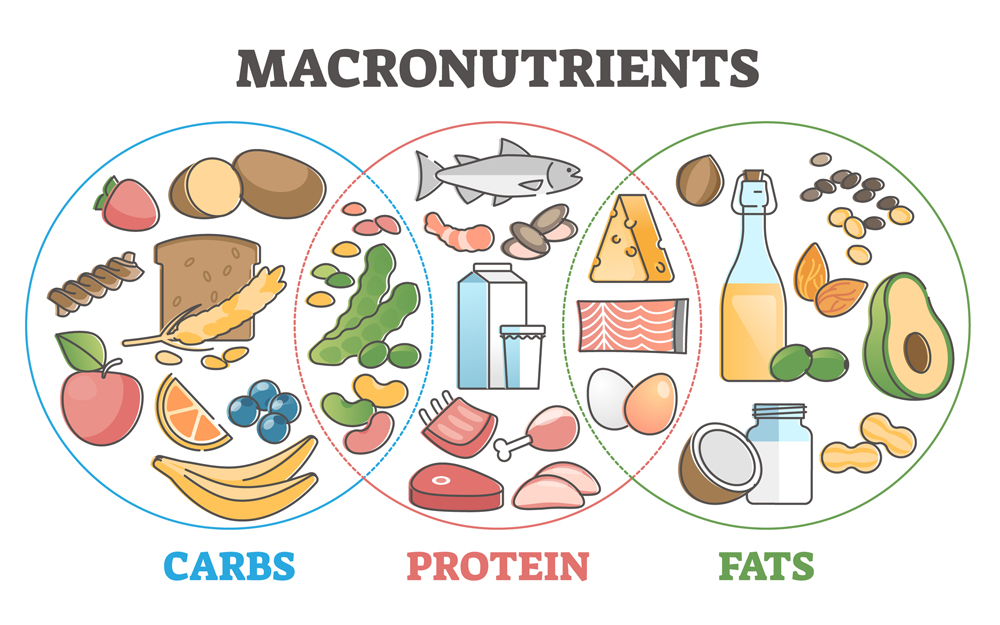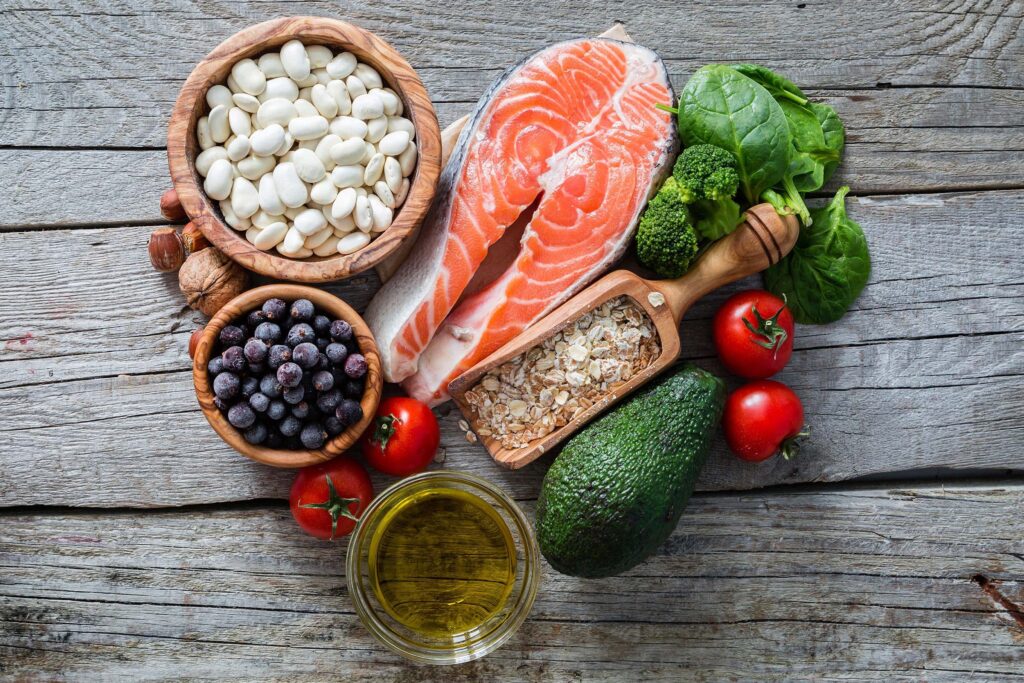In the pursuit of achieving a strong and muscular physique, bodybuilding requires a combination of dedicated training and a well-structured diet plan. A carefully designed Diet chart for Bodybuilding plays a vital role in fueling workouts, promoting muscle growth, and optimizing overall performance. In this comprehensive guide, we will provide you with an in-depth Diet chart for Bodybuilding , focusing on key nutrients and meal planning to help you reach your bodybuilding goals.
Understanding the Basics of Diet chart for Bodybuilding
Proper nutrition is essential for successful bodybuilding. Key principles include:
– Nutrition forms the foundation for muscle growth, recovery, and performance.
– A well-structured diet supports energy levels and overall strength.
– Optimal nutrition helps reduce body fat and increase lean muscle mass.
Macronutrients: Proteins, Carbs, and Fats:

– Proteins aid muscle repair and growth, aim for 1-1.5 grams per pound of body weight.
– Carbs provide fuel for workouts, and adjust intake based on activity levels.
– Healthy fats from sources like avocados and nuts support hormone regulation.
Micronutrients: Vitamins and Minerals:

– Essential for overall well-being, consume a variety of fruits and vegetables.
– Consider a multivitamin supplement if needed.
Calorie Intake and Energy Balance:
– Calculate daily calories based on goals, activity level, and metabolism.
– To gain muscle, aim for a surplus; for fat loss, maintain a deficit.
Meal Frequency and Portion Control:
– Eat smaller, frequent meals for a steady nutrient supply.
– Practice portion control and plan meals in advance.
Hydration and Its Significance:
– Proper hydration enhances performance and recovery.
– Drink enough water throughout the day.
– Dehydration can impact energy levels and performance.
Implement these principles to create an effective bodybuilding Diet chart for Bodybuilding . Include macronutrients, prioritize fruits and vegetables, and monitor progress regularly. Maintain meal frequency, portion control, and hydration for optimal results.
Designing Your Diet chart for Bodybuilding

Designing a well-structured Diet chart for Bodybuilding is crucial to optimize your nutrition and supporting your fitness goals. Let’s delve into the key components of creating an effective diet plan.
1. Determining your daily calorie requirements:
To achieve your desired physique, you can use mathematical calculations to determine your Basal Metabolic Rate (BMR) and Total Daily Energy Expenditure (TDEE), which will help you establish an appropriate calorie intake.
A. Basal Metabolic Rate (BMR):
The BMR represents the number of calories your body needs to sustain basic functions at rest. There are several mathematical formulas to estimate BMR, such as the Harris-Benedict equation:
For men: BMR = 66 + (6.23 x weight in pounds) + (12.7 x height in inches) – (6.8 x age in years)
For women: BMR = 655 + (4.35 x weight in pounds) + (4.7 x height in inches) – (4.7 x age in years)
Note: Make sure to use consistent units (pounds and inches) when using these formulas.
B. Total Daily Energy Expenditure (TDEE):
TDEE takes into account your activity level and goals, and it represents the total number of calories you need to consume in a day. To calculate TDEE, you can multiply your BMR by an activity factor:
Sedentary (little or no exercise): TDEE = BMR x 1.2
Lightly active (light exercise/sports 1-3 days per week): TDEE = BMR x 1.375
Moderately active (moderate exercise/sports 3-5 days per week): TDEE = BMR x 1.55
Very active (hard exercise/sports 6-7 days per week): TDEE = BMR x 1.725
Extra active (very hard exercise/sports and a physical job): TDEE = BMR x 1.9
C. Calorie Surplus or Deficit:
To gain muscle, you should aim for a calorie surplus, which means consuming more calories than your TDEE. It is generally recommended to have a surplus of around 10-20% above your TDEE.
To lose fat, you should aim for a calorie deficit, which means consuming fewer calories than your TDEE. A deficit of 15-25% below your TDEE is commonly suggested.
Remember that these calculations serve as estimates, and individual variations exist. It’s always advisable to consult with a healthcare professional or a registered dietitian for personalized advice based on your specific goals and needs.
2. Setting protein intake for muscle growth and repair:
To support muscle growth and development, bodybuilders are advised to consume an adequate amount of protein. A commonly recommended protein intake for bodybuilders is 1 to 1.5 grams of protein per pound of body weight.
For example, if an individual weighs 180 pounds, they would aim for a protein intake ranging from 180 to 270 grams per day. This range is calculated by multiplying their body weight in pounds by the recommended range of 1 to 1.5 grams.
Protein intake = Body weight (in pounds) x 1 to 1.5 grams
In the case of a 180-pound individual:
Minimum protein intake = 180 pounds x 1 gram = 180 grams per day
Maximum protein intake = 180 pounds x 1.5 grams = 270 grams per day
To achieve this protein intake, bodybuilders are encouraged to include lean sources of protein in their diet. Some examples of lean protein sources include chicken, turkey, lean beef, fish, eggs, and dairy products.
It’s worth noting that individual protein needs can vary based on factors such as training intensity, body composition goals, and overall dietary requirements. Consulting with a healthcare professional or a registered dietitian can provide personalized advice based on specific needs and goals.
3. Optimal carbohydrate intake for energy and performance:
To support intense workouts and replenish glycogen stores, consuming a sufficient amount of carbohydrates is important. The recommended carbohydrate intake is typically expressed as a percentage of total calorie intake.
1. Calculate the carbohydrate intake in grams:
To determine the daily carbohydrate intake in grams, you can follow these steps:
Step 1: Calculate the total calorie intake from carbohydrates:
Multiply the total calorie intake by the percentage of calories that should come from carbohydrates. This is typically in the range of 40-60%.
Carbohydrate calories = Total calorie intake x Carbohydrate percentage
Step 2: Convert carbohydrate calories to grams:
Since 1 gram of carbohydrates provides approximately 4 calories, divide the carbohydrate calories by 4 to obtain the carbohydrate intake in grams.
Carbohydrate grams = Carbohydrate calories / 4
2. Example calculation:
Let’s assume a total calorie intake of 2500 calories per day and aiming for 50% of calories from carbohydrates.
Step 1:
Carbohydrate calories = 2500 calories x 0.50 = 1250 calories
Step 2:
Carbohydrate grams = 1250 calories / 4 = 312.5 grams
Therefore, in this example, the daily carbohydrate intake would be approximately 312.5 grams.
Remember to adjust the carbohydrate intake based on individual factors such as activity level, training intensity, and personal preferences. Opting for complex carbohydrates like whole grains, sweet potatoes, brown rice, and fruits is generally recommended due to their higher nutritional value and fiber content.
4. Choosing healthy fats for hormone regulation and overall health:

To support hormone production, joint health, and overall well-being, it is recommended to include sources of healthy fats in your diet. The recommended fat intake is typically expressed as a percentage of your total calorie intake.
1. Calculate the fat intake in grams:
To determine the daily fat intake in grams, you can follow these steps:
Step 1: Calculate the total calorie intake from fats:
Multiply the total calorie intake by the percentage of calories that should come from fats. This is typically in the range of 20-30%.
Fat calories = Total calorie intake x Fat percentage
Step 2: Convert fat calories to grams:
Since 1 gram of fat provides approximately 9 calories, divide the fat calories by 9 to obtain the fat intake in grams.
Fat grams = Fat calories / 9
2. Example calculation:
Let’s assume a total calorie intake of 2000 calories per day and aiming for 25% of calories from fats.
Step 1:
Fat calories = 2000 calories x 0.25 = 500 calories
Step 2:
Fat grams = 500 calories / 9 = 55.56 grams
Therefore, in this example, the daily fat intake would be approximately 55.56 grams.
It’s important to note that individual fat needs can vary based on factors such as activity level, body composition goals, and overall dietary requirements. Including sources of healthy fats like avocados, nuts, seeds, and olive oil, and fatty fish such as salmon and tuna can provide essential fatty acids and other beneficial nutrients. Consulting with a healthcare professional or a registered dietitian can help determine the ideal fat intake for your specific needs and goals.
5. Incorporating vitamins and minerals through whole foods:
Fruits and vegetables are packed with essential vitamins, minerals, and antioxidants that support overall health and recovery. Include a variety of colorful options in your diet, such as spinach, kale, berries, citrus fruits, bell peppers, and broccoli. Aim for a minimum of 5 servings per day.
6. Hydration and its significance for bodybuilders:
Staying hydrated is crucial for optimal performance, muscle function, and overall health. Aim to drink at least 8-10 glasses of water daily, or more depending on your activity level and climate. Carry a water bottle with you and sip water throughout the day to maintain proper hydration.
Remember, the numbers provided above are general guidelines, and individual requirements may vary. It’s important to listen to your body and make adjustments based on your progress and goals. Consulting with a registered dietitian or nutritionist can provide personalized guidance to optimize your Diet chart for Bodybuilding.
By incorporating these key components into your Diet chart for Bodybuilding, you can ensure that your nutritional needs are met to support muscle growth, recovery, and overall performance. Stay consistent, track your progress, and make adjustments as necessary to achieve the best results on your bodybuilding journey.
Sample Diet chart for Bodybuilding (Indian Food):
Here is a sample Diet chart for Bodybuilding with an emphasis on Indian cuisine. This chart provides a variety of Indian food options, incorporating traditional flavors while meeting the nutritional requirements for muscle growth and performance. The table below outlines different meals and their respective macronutrient breakdown:
| Meal Time | Meal Options | Macronutrient Breakdown |
| Breakfast | Oats with milk, almonds, and fruits | Protein: 10g |
| Mid-Morning Snack | Boiled eggs and sprouts salad | Protein: 15g |
| Lunch | Brown rice, lentils (dal), mixed vegetables, and curd | Protein: 20g |
| Afternoon Snack | Whey protein shake with water | Protein: 25g |
| Pre-Workout Meal | Grilled chicken breast with roti (whole wheat bread) | Protein: 30g |
| Post-Workout Meal | Chickpea curry (chole), brown rice, and salad | Protein: 25g |
| Evening Snack | Paneer (cottage cheese) tikka with mint chutney | Protein: 20g |
| Dinner | Fish curry (machli), quinoa, and mixed vegetables | Protein: 30g |
| Before Bed Snack | Greek yogurt with nuts and seeds | Protein: 15g |
| Total | Protein: 180g |
Note: This is a sample Diet chart for Bodybuilding that incorporates popular Indian food options. Adjust the portion sizes and food choices according to your preferences, dietary restrictions, and individual goals. It is advisable to consult with a healthcare professional or a registered dietitian to create a personalized diet plan that suits your specific needs.
Conclusion:
A well-structured Diet chart for Bodybuilding is a crucial component of achieving your fitness goals. By understanding the fundamental principles of nutrition and tailoring your diet to meet your specific needs, you can fuel your workouts, optimize muscle growth, and enhance overall performance. Remember to focus on nutrient-dense foods, maintain a calorie surplus or deficit as needed, and stay consistent in your efforts. With dedication and the right dietary approach, you can unlock your bodybuilding potential and attain the physique you desire.
Frequently asked questions (FAQs)
A1: A diet chart for bodybuilding should include a combination of macronutrients and sufficient calories to support muscle growth and recovery. It should typically include lean sources of protein such as chicken, fish, tofu, and lentils, which aid in muscle repair and growth. Complex carbohydrates like brown rice, quinoa, and sweet potatoes provide energy for intense workouts. Healthy fats from sources like avocados, nuts, and olive oil are essential for hormone production and overall health. Additionally, including a variety of fruits and vegetables ensures an adequate intake of vitamins, minerals, and antioxidants for optimal performance.
A2: Planning meals and portion sizes in a bodybuilding diet chart requires attention to both quality and quantity. It is recommended to divide the daily caloric intake into several smaller meals throughout the day to maintain a steady supply of nutrients and support muscle growth. Each meal should ideally contain a balance of protein, carbohydrates, and fats. The specific portion sizes will vary depending on an individual’s caloric needs and goals, but a general guideline is to aim for approximately 1 gram of protein per pound of body weight, along with an appropriate amount of carbohydrates and fats. Keeping track of portion sizes using measuring cups, food scales, or visual cues can help ensure the right balance and promote progress towards bodybuilding goals.









